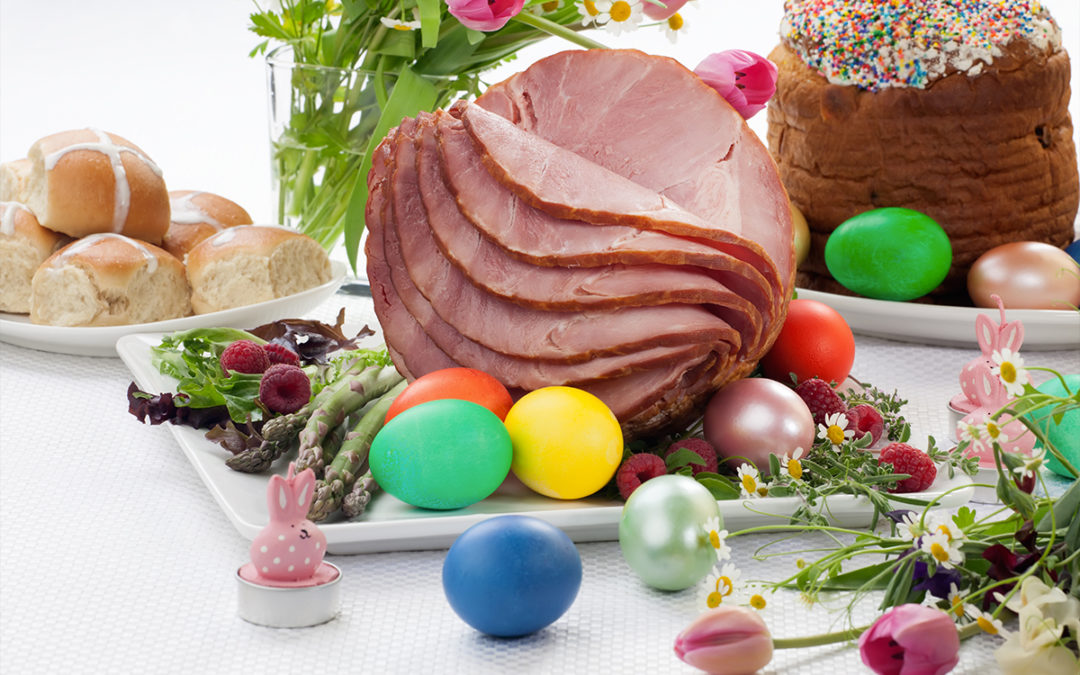With the recent coronavirus outbreak, it’s safe to say that Easter may be slightly different this year in Illinois. Stay-at-home orders mean that many families will be finding alternative ways to celebrate the holiday, just as families that manage different food allergies must also find alternate meals and treats to serve.
Managing food allergies for any kind of meal is challenging, let alone on Easter. For a holiday focused on lots of food, eggs and candy, hidden allergies can quickly trigger a disaster scenario for someone with a food allergy. Many safe foods can easily become unsafe with the addition of seasonings or a sauce.
Every family has their own menu and traditions, but we’ve compiled a list of the most common meal items and some alternatives below.
Ham
A dinner ham is often the centerpiece of most Easter meals. Besides a general pork allergy, a ham can have other triggers to be cautious of. It’s important to check the ingredients of any packaged flavorings or glazes you intend on cooking with. Hams can also be packaged in a marinade or brine so you need to carefully read those labels as well. The Honey Backed Ham website has an excellent guide on identifying allergens in their products.
Potatoes
Popular potato side dishes like mashed, scalloped and au gratin potatoes usually contain dairy-based ingredients, such as milk, cheese, cream, or butter. Be sure to substitute with dairy/soy free milk or use plain baked potatoes as an alternative.
Vegetables
Vegetables are usually safe for most people if they are unflavored. However, when cooked in certain oils or sauces they can instantly become dangerous. Separate toppings from the vegetables and check which ingredients are used on any sauces and seasonings.
Eggs
What would Easter be without eggs?! From chocolate eggs, to marshmallow eggs, peanut butter eggs, creme eggs, or caramel eggs, there is no shortage of egg treats for this holiday. Most celebrations aren’t complete without dying eggs in food coloring. Besides eggs themselves being an allergen, the dye itself can be a trigger for people. Touching an egg that has been dyed in food coloring can cause skin reactions and rashes. Not to mention touching your face or mouth after your hands have been in contact. There are many alternatives to egg dying, so you can avoid any triggers while still enjoying the egg tradition.

Bread and Rolls
The obvious wheat allergy is present in any form of bread. In addition to wheat, many baked goods will often contain other allergens such as soy, egg, milk, sesame and tree nuts. Many gluten-free options are available at stores.
Salad
Many salads can have various dangerous ingredients like tree nuts, croutons or cheese crumbles. Along the same idea as vegetables, a safe choice is to separate any toppings from a plain salad and mix individually.
Desserts
The best part of the meal and unfortunately, the most treacherous for allergy sufferers. Chocolates and candies can contain a wide range of allergens, like tree nuts, peanuts, milk, wheat and eggs. Candies like jelly beans are often safe from most allergens, and many companies make allergy-friendly chocolate products now. It’s always important to read every ingredient on labels before consuming.
While prevention is always key, it’s just as important to have an emergency preparation in case any allergen is accidentally consumed. If you have any questions or concerns with your food allergies, please contact us.




